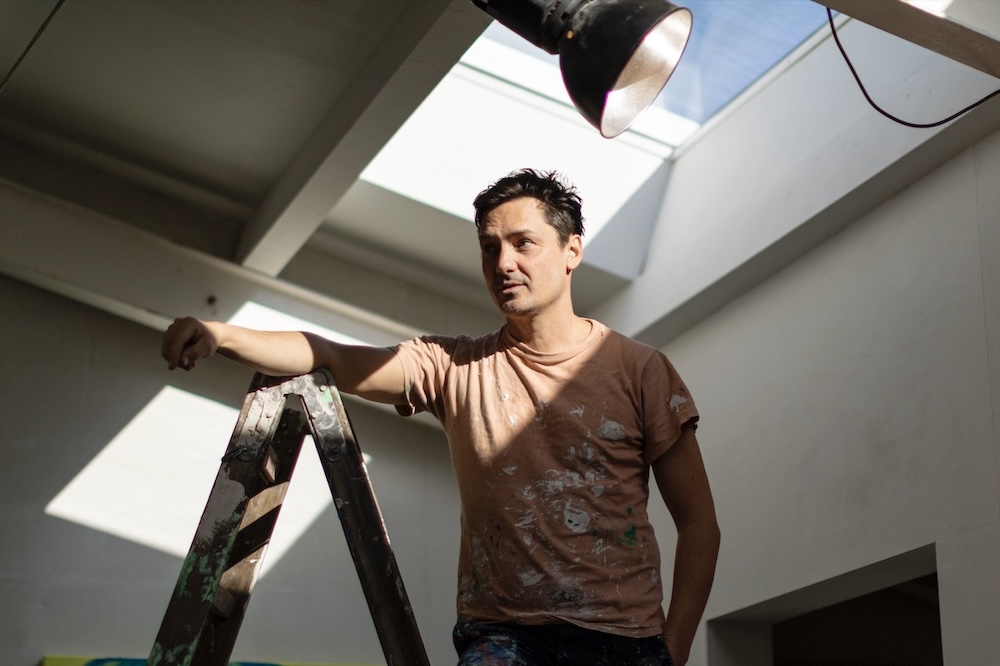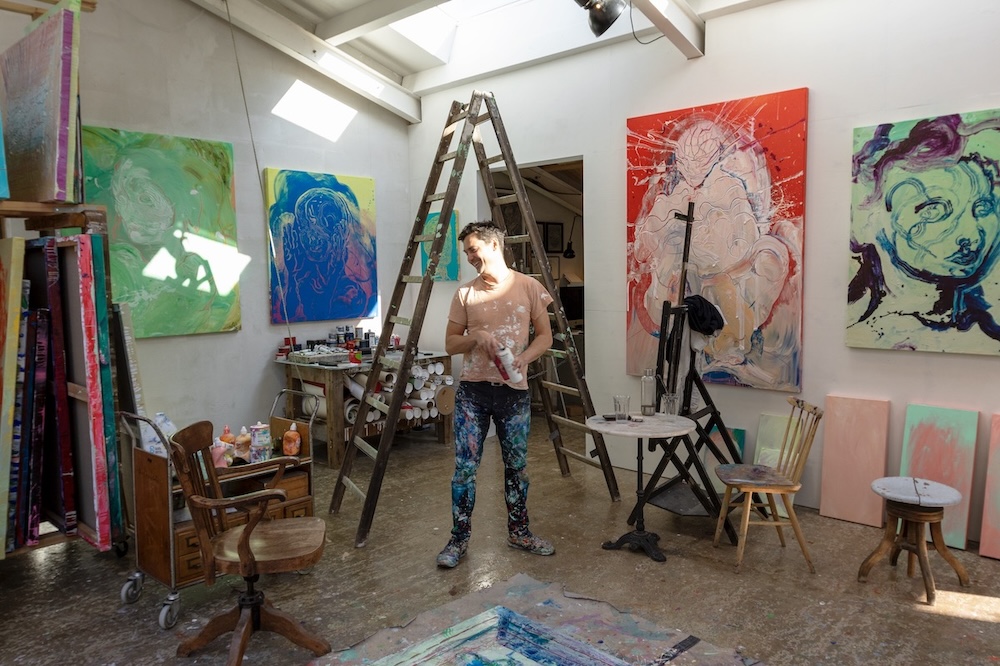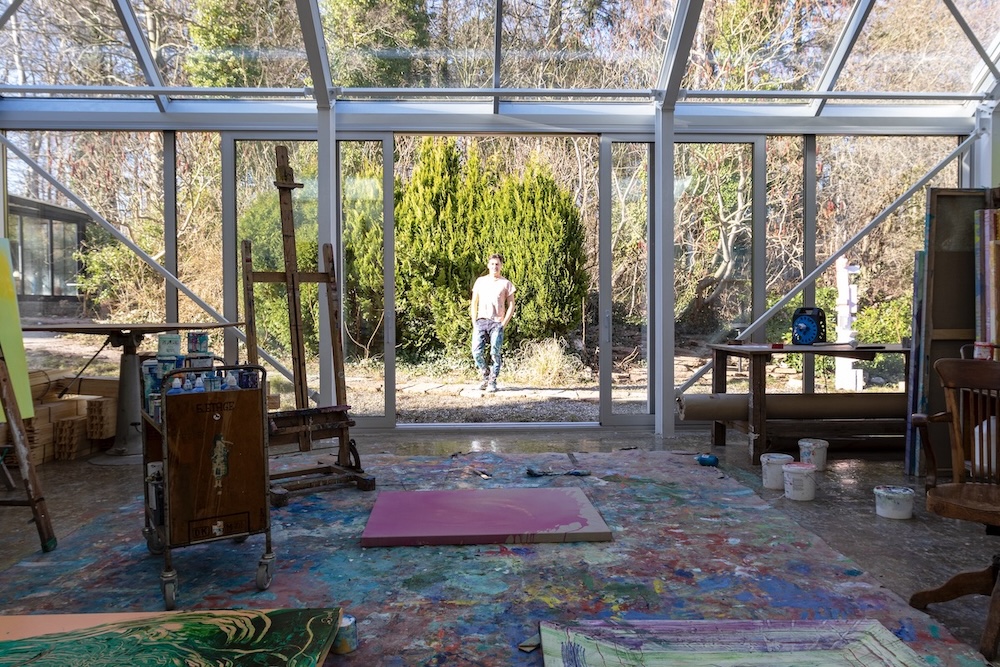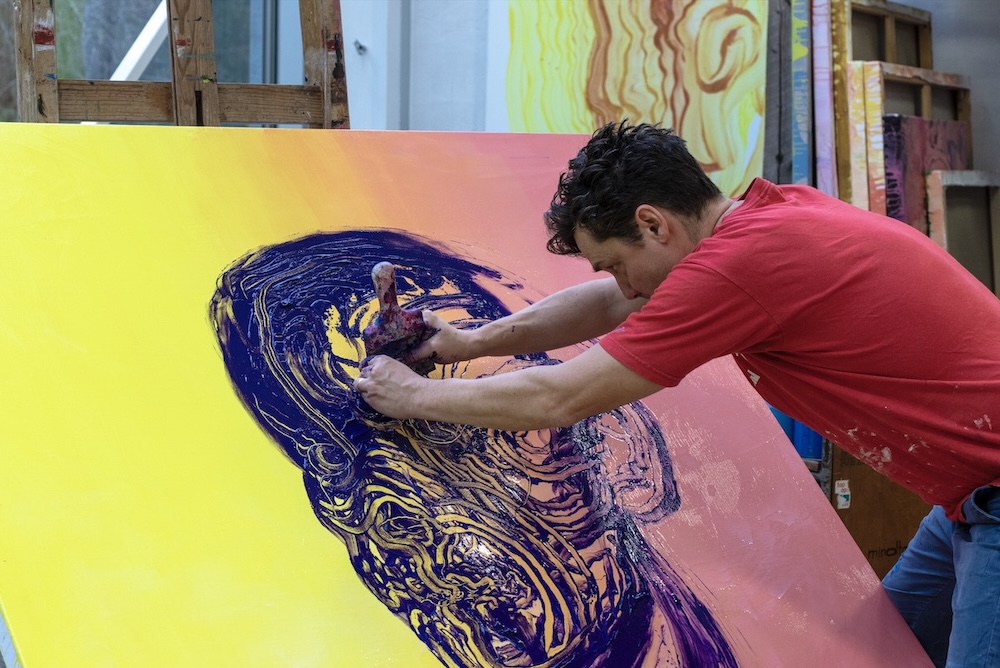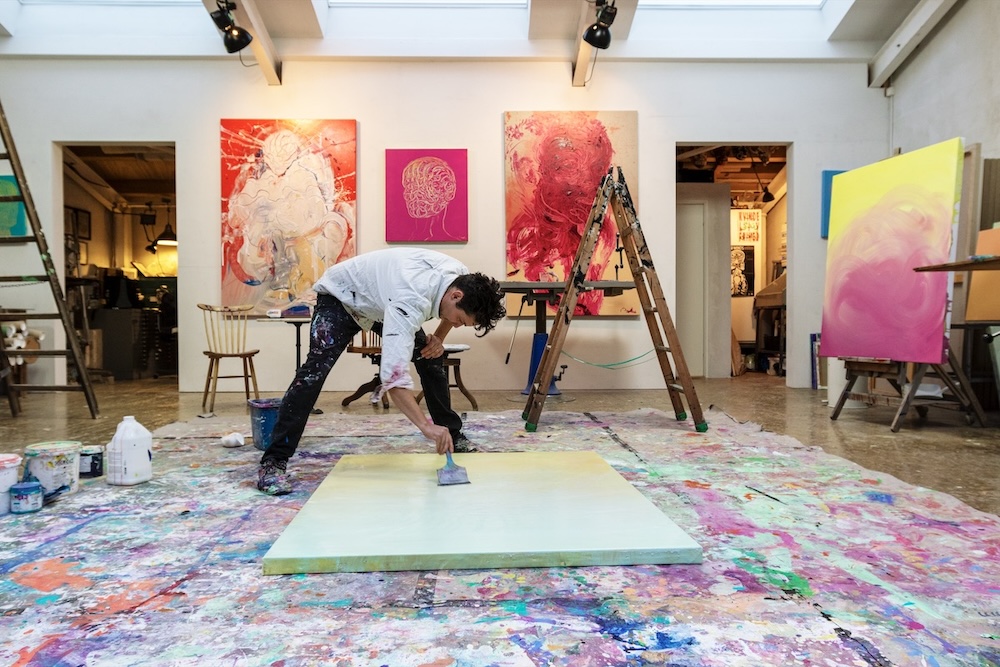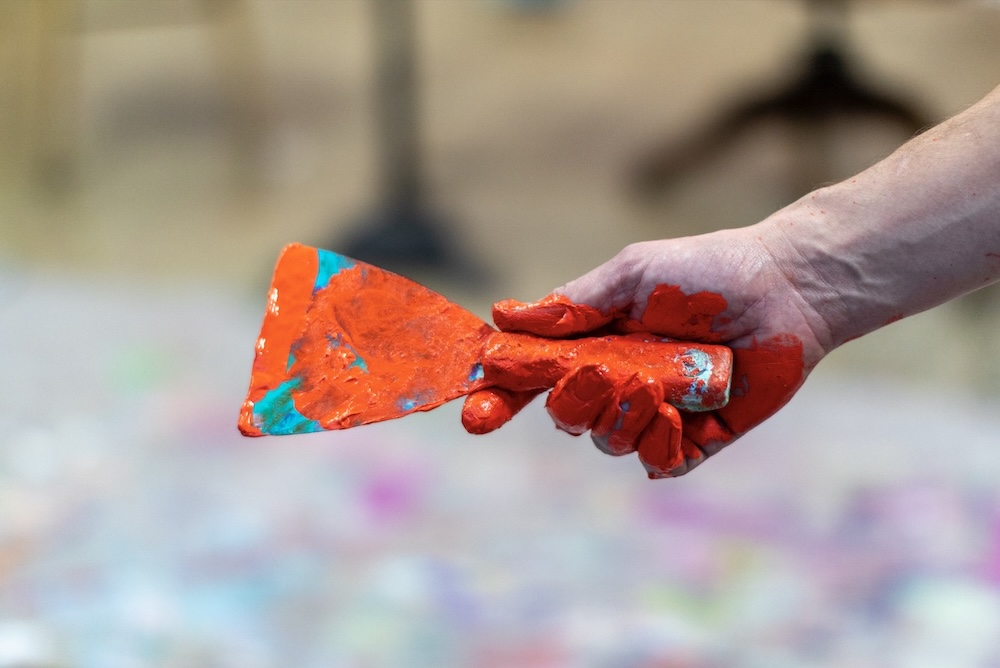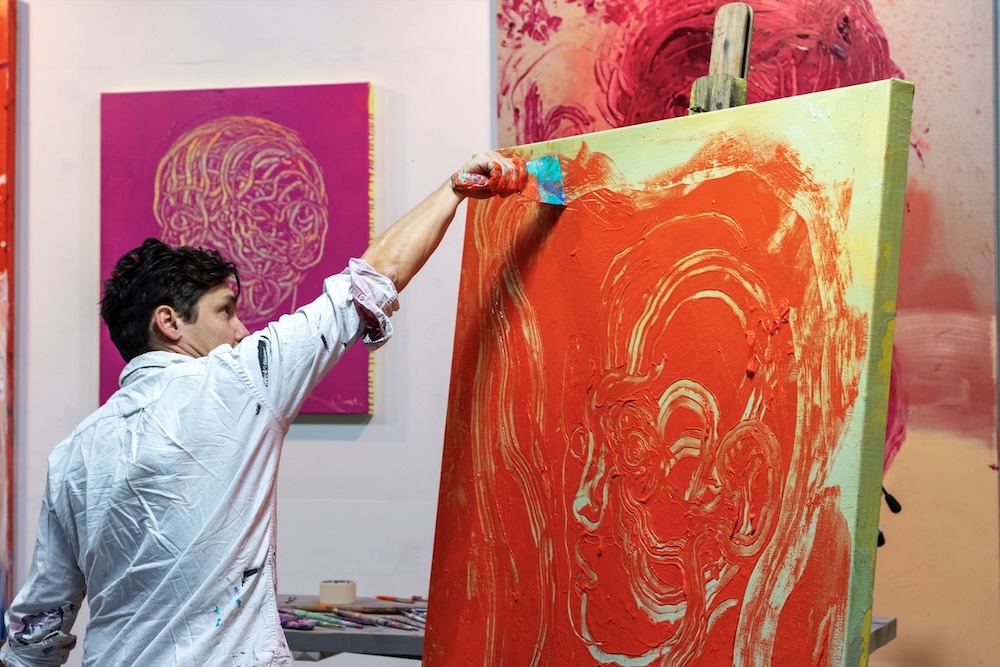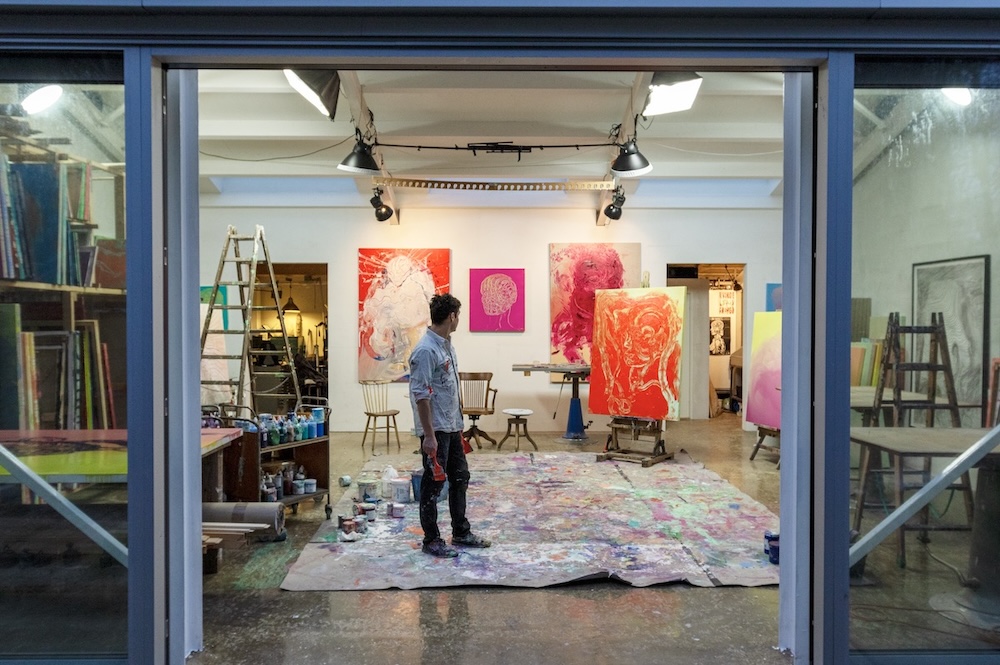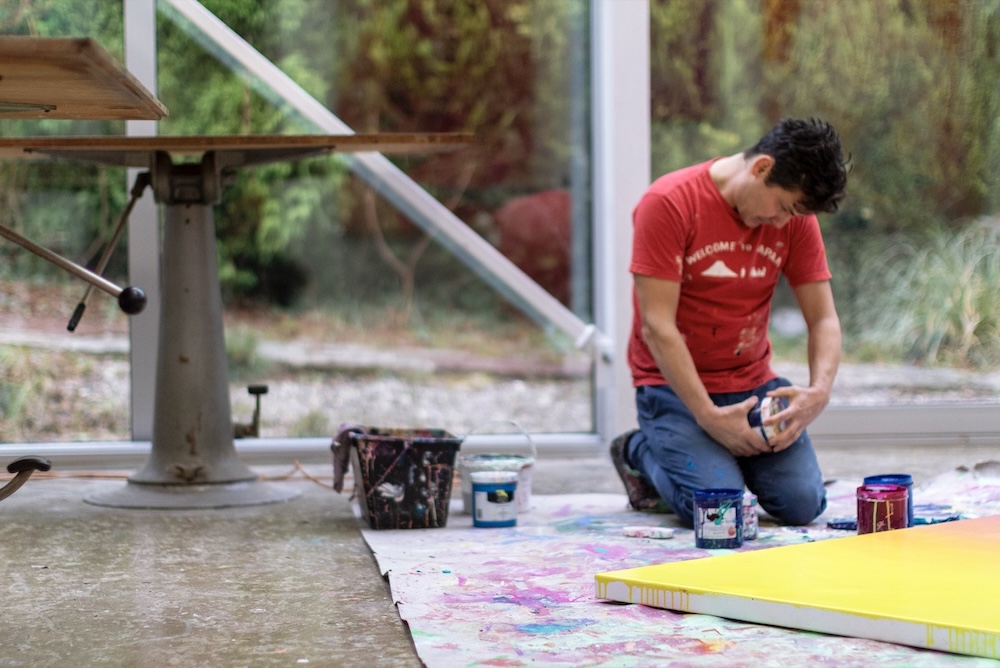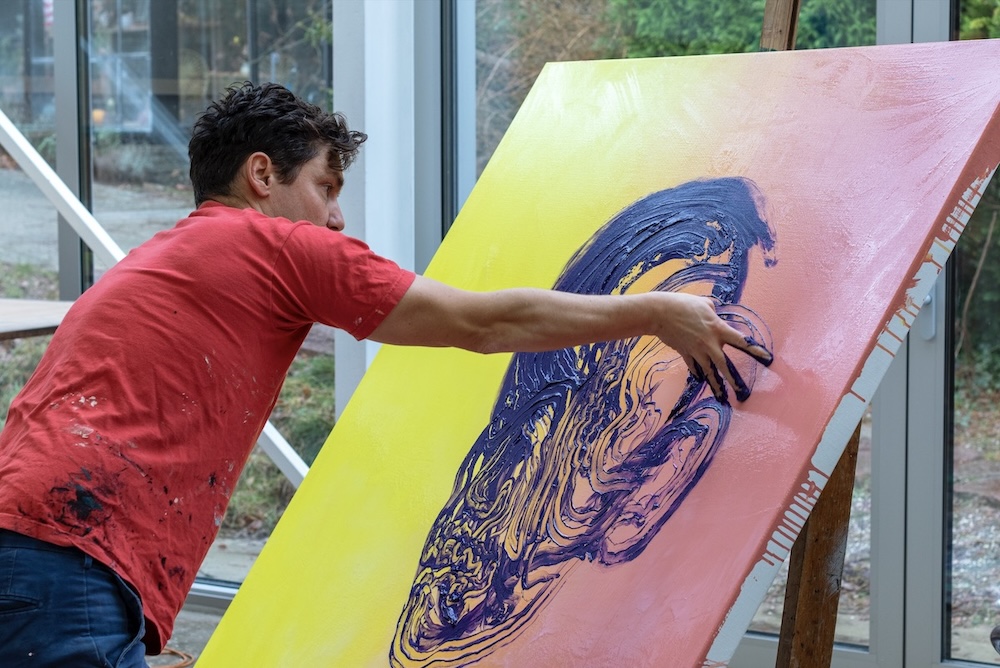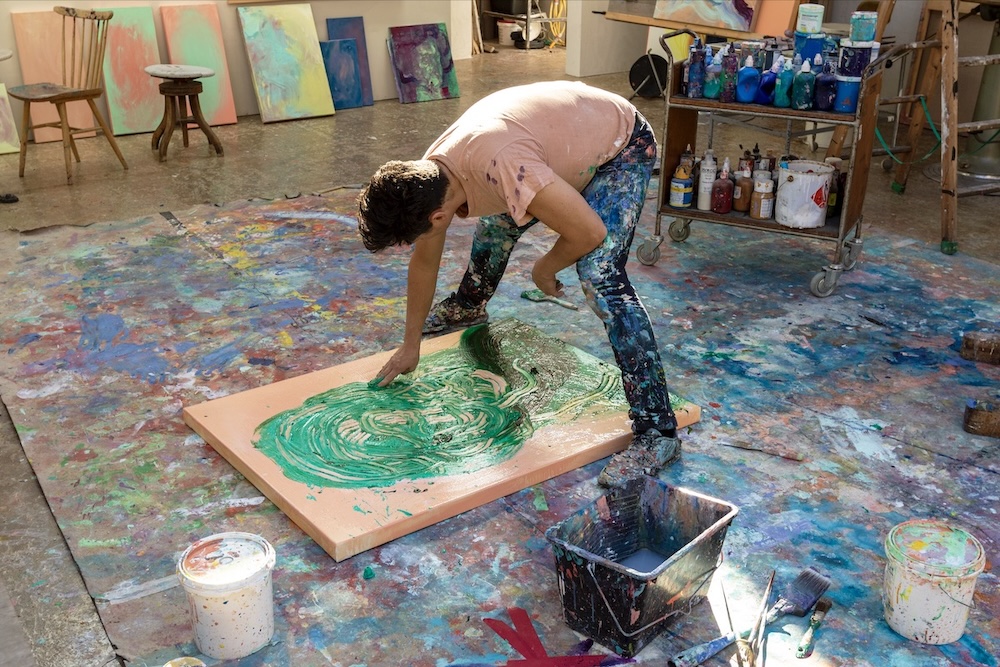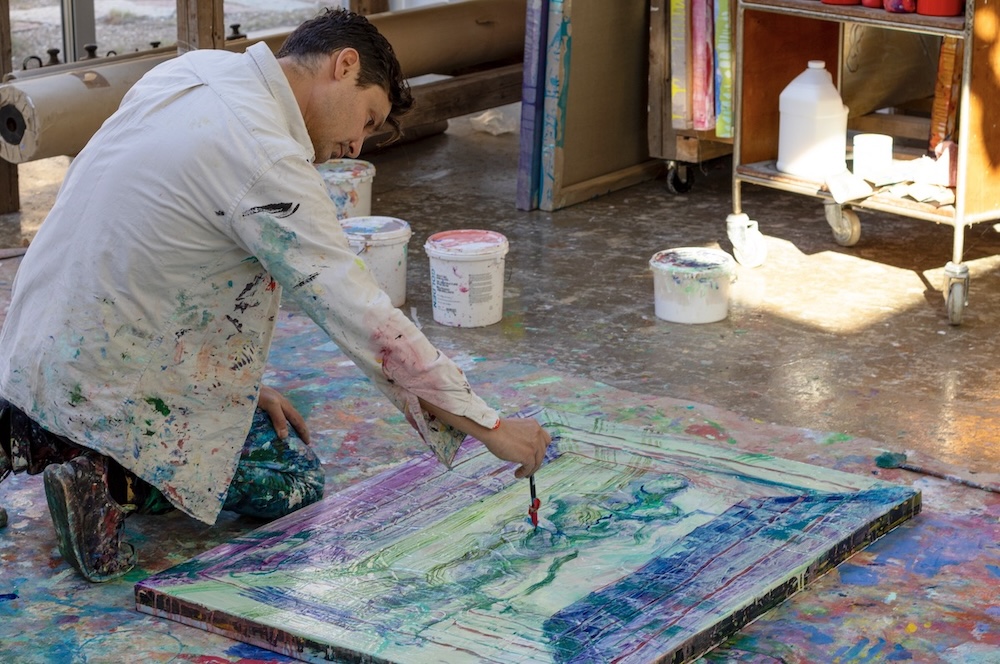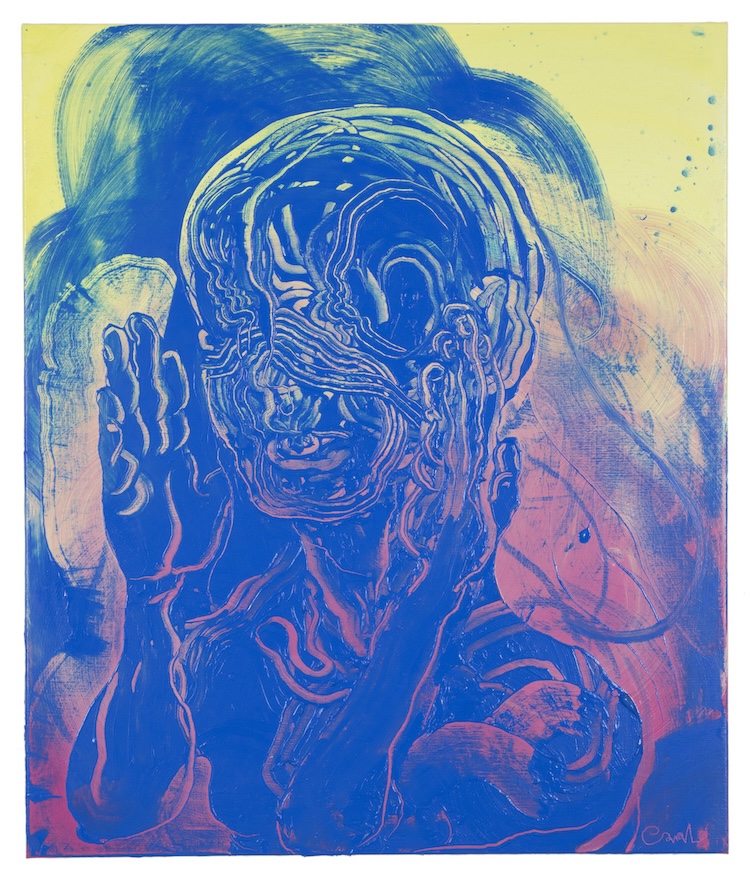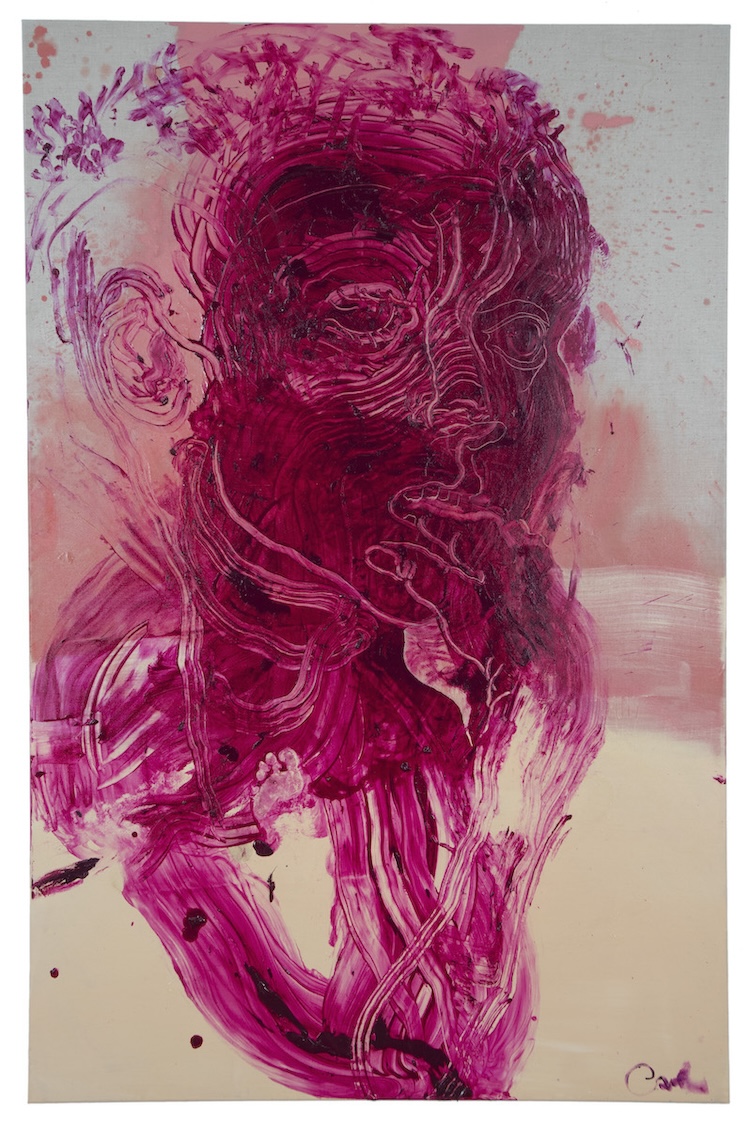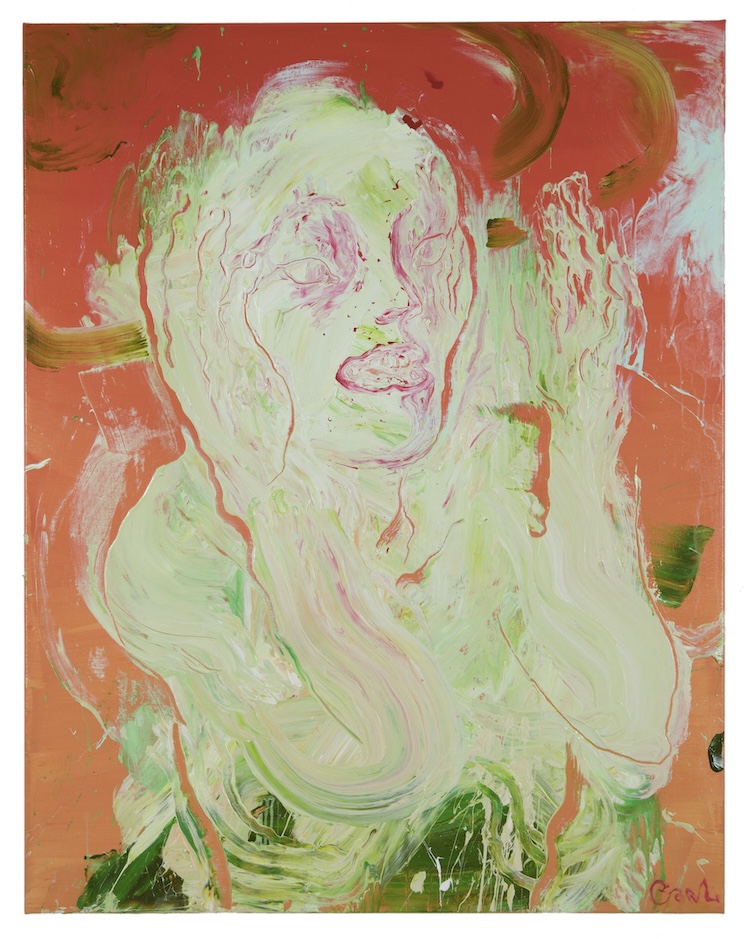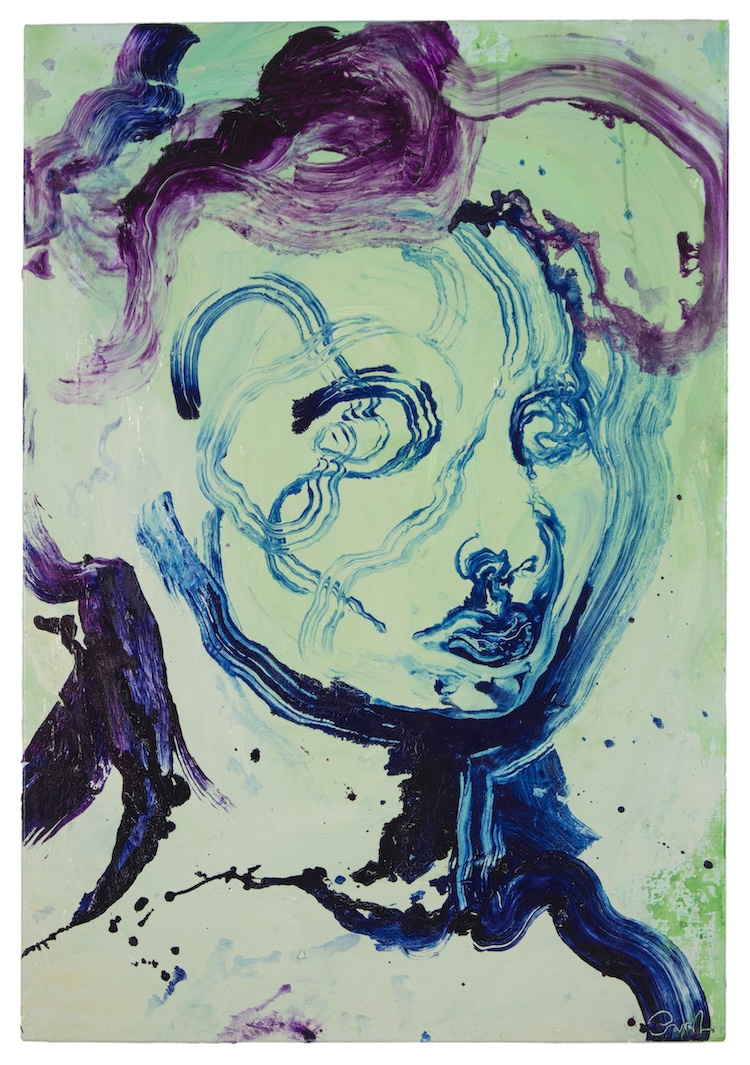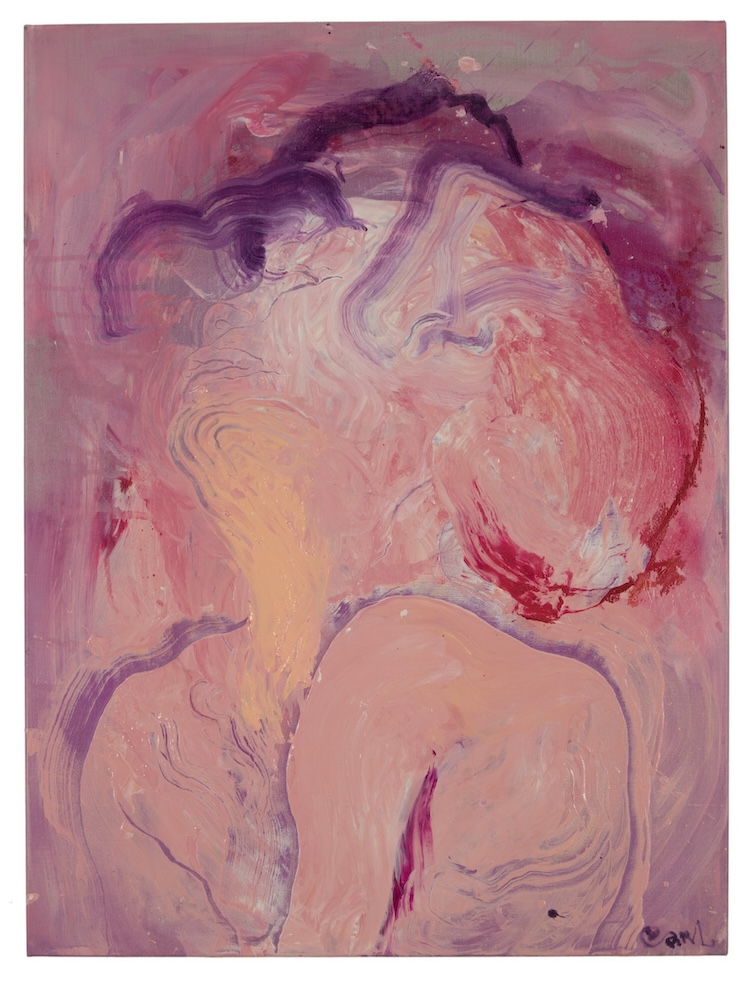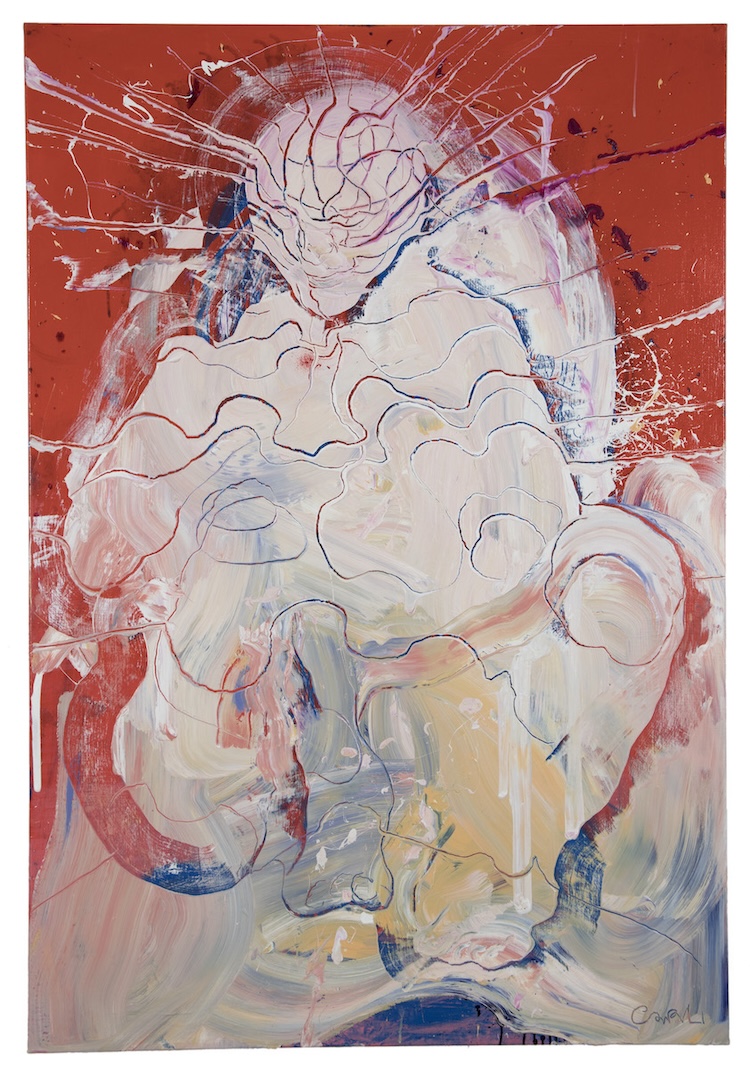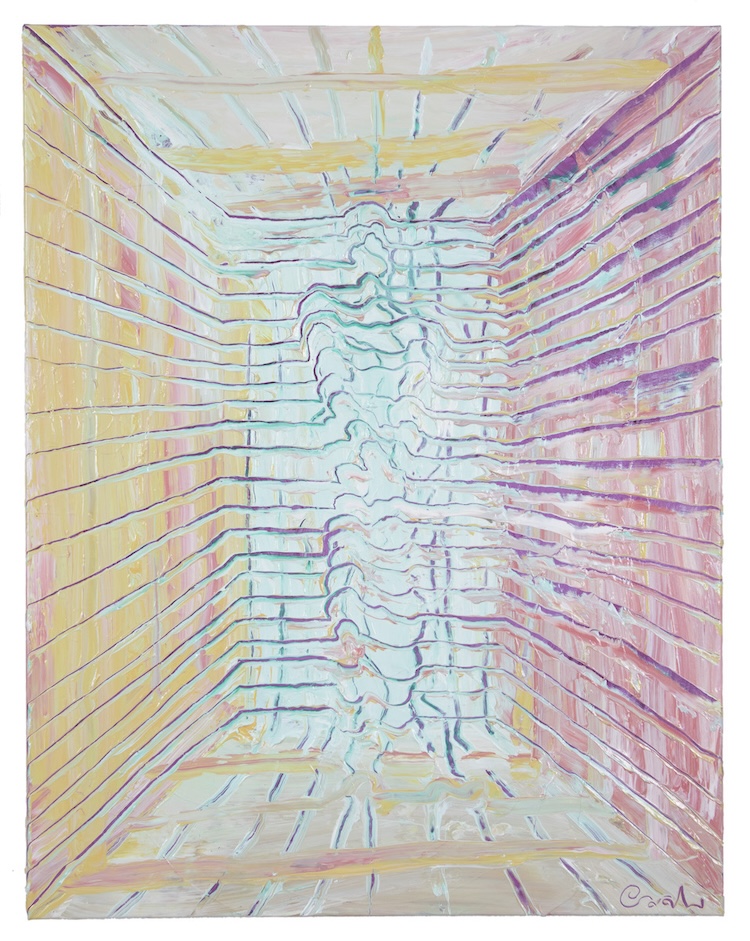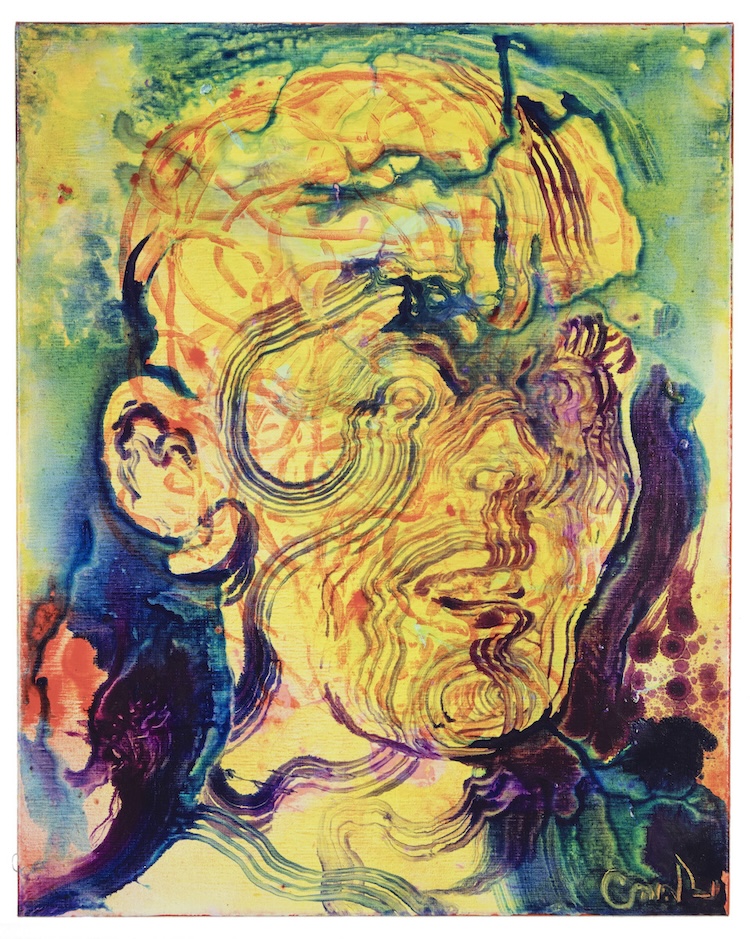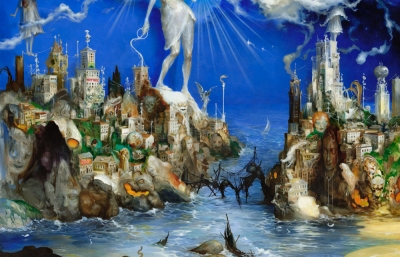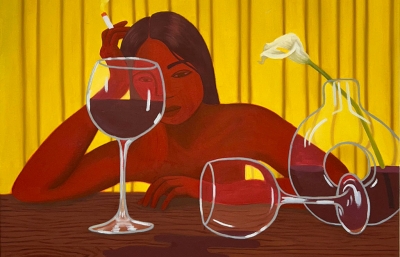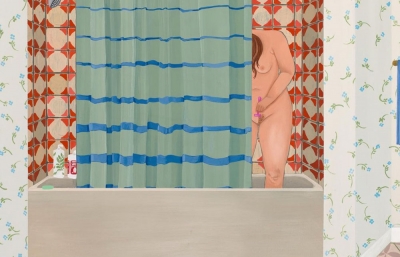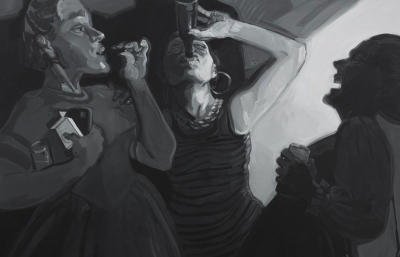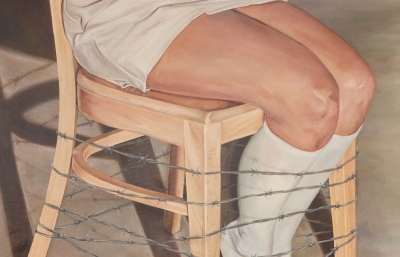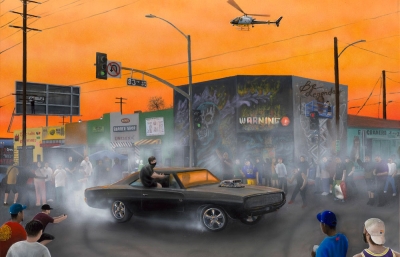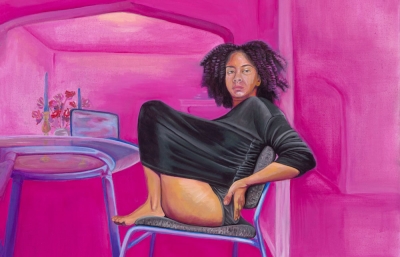Formation Gallery is proud to present Carl Krull's second solo exhibition in the gallery. With NECTAR, Krull showcases a much more loose and freely expressive approach in his artistic practice through a series of new paintings.
For over 10 years, Carl Krull worked exclusively in black and white, navigating through numerous constraints and dogmas aimed at breaking away from the very essence of the line, which is fundamental to the artist's work. During this period, known as the artist's "seismic period," the contour line ceased to be central, and the motifs emerged through a myriad of interrelations among lines. After Krull moved from Copenhagen to his current home and studio in the countryside, he began painting exclusively in colors.
Whereas Carl Krull was previously confined to a dogmatic seismic universe in black and white, the barriers are now completely down, and the joy of painting flows openly. The line is set free, and anything can happen. Krull's new paintings unfold fresh and colorful, pointing to the exhibition's title, NECTAR – one feels drawn in, captivated by the appetizing and sensory expression.
With this second exhibition at the gallery, Carl has thus loosened the reins and arrived at an even more freely imaginative expression. The colors are very vivid, almost technicolor, harkening back to the title, which evokes thoughts of flowers and honey, where the motifs appear almost edible in their intensity and explosion of color. The body is brought into focus more, with arms, legs, and a wild freshness immediately catching the eye. Krull has opened himself up to a freer expression.
In the exhibition "Protagonist" two years ago, we witnessed the first steps in this newly liberated aesthetic. He opened up to painting and colors at Formation Gallery's inaugural exhibition. Here, the portrait, the protagonist, took center stage. Fingers moved across the canvas, akin to a dewy window or mirror after a steamy bath. The contour was lifted, and the face emerged through thousands of circuits, longitudes, and latitudes intersecting in a complex whirl. In the new paintings, the artist has let loose. The experiences gained previously are a baggage that occasionally still finds expression, but there are no rules anymore. Meticulously and curiously, Krull excavates the motifs from the layers of paint and canvas. In a performative balancing act, the artist experiments with adding, mixing, stopping, continuing, destroying, painting over, and "finding" the motif, while his own body works, treads, circulates, and attacks the artwork.
For Krull, the title of the exhibition is ambiguous. It takes him back to his childhood when he spent every summer visiting his grandparents in Poland. Upon arrival at the Polish country estate near the border with Ukraine, the first thing he did was run out to the garden to his grandfather's bees, to watch them dance in the air, in and out of the beehives. The honey from childhood bees is etched in memory as a sweet reminder. At the same time, the title leads his thoughts towards his mother, who was also an artist. Her works were often inhabited by the bat and the hummingbird, which, like the bee, also drink nectar. Nectar is also the drink of the Olympic gods, their source of eternal life. The life of the works continues after the artist's own life is over, like a blooming nectar-filled fruit, remaining forever young and relevant. Welcome to NECTAR.



